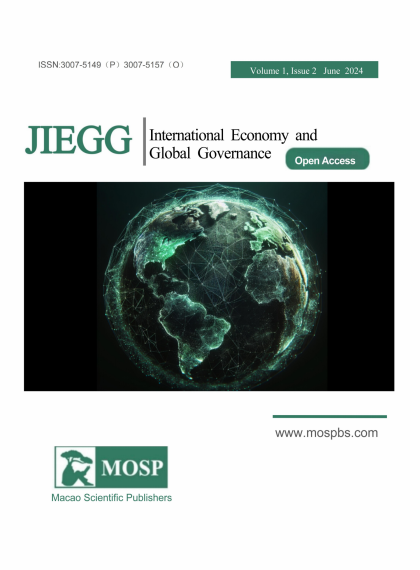-
Morante, A., & Wu, H.D. (2023). Assessing China's news coverage and soft power in Latin America in the wake of the Belt and Road Initiative (2013–2021). International Communication Gazette, (85),80-96.
-
Jenkins, R.O. (2010). China's Global Expansion and Latin America. Latin American Studies, (42), 809-837.
-
Roett, R., & Paz, G. (Eds.). (2010). China's Expansion into the Western Hemisphere: Implications for Latin America and the United States. Washington, D.C.: Brookings Institution Press.
-
Harris, R. L. (2015). China’s Relations with the Latin American and Caribbean Countries: A Peaceful Panda Bear instead of a Roaring Dragon. Latin American Perspectives, (6), 153-190.
-
Hakim, P. (2006). Is Washington Losing Latin America? Foreign Affairs, 1, 39-53.
-
Gallagher, K. P. (2016). China vs. the Chorus: The PRC's Evolving Engagement with Latin America. Boston University Journal.
-
Walker, R. B. J. (1993). Inside/Outside: International Relations as Political Theory. Cambridge: Cambridge University Press.
-
Fan, H., Tao, D. (2020). Building the China-Latin America Community of Shared Future. International Observation, (02), 1-26.
-
Wang, H. Z. (2022). China-La Community of Latin American and Caribbean States Forum: Progress, Challenges, and Optimization Pathways. Pacific Journal, (06), 64-74.
-
Wang, F., Chen, L. (2023). U.S. Intervention in China's Economic Cooperation with Latin America: Motives, Methods, and Impacts. International Economic Cooperation, (04), 78-90.
-
Song, J. Y., Fu, L. Y. (2021). Constructing a “Balanced, Stable, Coordinated, and Cooperative” China-U.S.-Latin America Trilateral Relationship. International Studies, (06), 70-83.
-
Jiang, Y. Y., Xu, P. Y. (2024). Prospects for China-Latin America Clean Energy Cooperation under the “Dual Carbon” Goals. International Petroleum Economics, (01), 48-61.
-
Gong, Y. J. (2020). Zhou Enlai and China-Latin America Relations in the Eyes of Latin American Scholars. Social Sciences Abroad, (02), 43-51.
-
Gao, W. Q. (2023). Dialogue and Collision: A Study of the Belt and Road Initiative from the Perspective of Latin American Think Tanks. Journal of Tangshan College, (02), 57-67.
-
Chai, Y., Kong, S. (2014). The Pacific Alliance: A New Development in Latin American Regional Economic Integration. Nankai Journal, (4), 28.
-
Zhang, Y. (2020). Post-Crisis Era Regional Economic Integration Situation and Prospects in Latin America. International Economic Review, (03), 75-90.
-
Wang, X. L. (1989). Latin American Countries Actively Promote South-South Cooperation. Contemporary International Relations, (02), 27-34, 64-65.
-
Zhang, H. L. (2016). New Changes in the Current Latin American Integration Process and Their Impact on China-Latin America Relations. Pacific Journal, (10), 58-69.
-
Huang, L. P. (2022). Building the China-Latin America Community of Shared Future under the Background of Sino-American Competition: From the Perspective of International Political Economy. Latin American Studies, (04), 75-94.
-
Zhao, Z. Y., Chen, Y. T. (2017). Entering the “Construction and Development” Stage of China-Latin America Relations. Latin American Studies, (5), 16-30.
-
Zhou, C., Zhou, D. Y. (2020). Research on the Trade Potential between China and Latin American Countries under the Background of the “Belt and Road” Initiative-An Empirical Analysis Based on the Gravity Model. Industrial Technology and Economics, (4), 63-71.
-
Cai, W. (2021). Creating Opportunities and Seeking Common Development to Promote the Stable and Far-reaching Development of China-Latin America Relations in the New Era. Diplomatic Quarterly, (4), 142.
-
Zhou, Z. W. (2014). The “Partnership Theory” and “Competition Theory” of China-Brazil Relations: A Brazilian Analytical Perspective. Latin American Studies, (2), 17-23.
-
Zhou, Z. W. (2020). China-Latin America “Belt and Road” Cooperation under the Changes in the Latin American Region. Contemporary World, (10), 24-29.
-
China Institutes of Contemporary International Relations of Research Group of Latin American Institute, Cao, T. (2020). China-Latin America “Belt and Road” Cooperation: Challenges and Paths to Deepening. International Studies, (2), 79-92.
-
Zhang, H. L. (2023). The Era Significance and Path Considerations of High-Quality Joint Construction of the “Belt and Road” between China and Latin America. Contemporary World, (9), 33-39.

